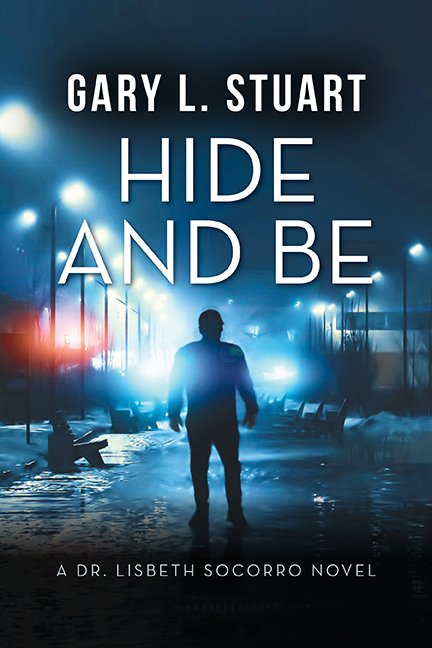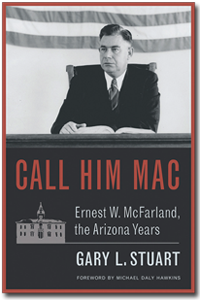The media often gets it right. Readers mostly do. But still, there is a national misunderstanding about civil cases grounded in the civil torts of battery and defamation. Some readers, and sadly some writers jump to the wrong conclusion when they hear news about a woman claiming a man raped her. Isn’t rape a crime? Can it be proved? What is the sentence for rape? Jumping to conclusions is an American pastime. It keeps everybody busy wondering about truth, timing, taunting, and torture. This blog attempts to clarify something lawyers find simple, and readers struggle with.
Rape is a crime, a tort, and applicable in criminal and civil courts. When brought in a civil court, rape sounds in tort, not contract, and is subject to a preponderance of the evidence not proof beyond a reasonable doubt. Rape, the civil tort, is a battery. “A battery is an intentional tort, as opposed to an act resulting from negligence. The elements to establish the tort of battery are the same as for criminal battery, except that criminal-specific intent need not be present. The elements of civil battery are Intent (not criminal intent to cause injury, necessarily, but general intent to commit the act), Contact (non-consensual contact with the individual or his/her effects, such as clothing), and Harm (the battery caused actual harm meaning bodily harm, mental harm, or emotional harm, not limited to just physical harm).”[1]
The law does not require the level of “intent” that most people think about. In a civil battery case, the requisite intent is merely to touch or make contact without consent. It need not be an intention to do wrong and the wrongdoer need not intend to cause the particular harm that occurs. Non-consensual touching is all that is required. Battery law deals with the consequences of touching another person in a harmful or offensive manner.
The prompt for this blog is the civil battery and defamation case tried in New York involving a former President and a New York journalist. She claims he raped her. He did not testify, nor did his lawyers call any witnesses to the stand. The jury returned a verdict in her favor on May 9, 2023. The media coverage was nationwide, nearly instantaneous, and surprisingly accurate. “Trump Found Liable For Sexually Abusing and Defaming E. Jean Carroll In Civil Trial And Is Ordered To Pay $5 Million.”[2] The NBC headline appears to have passed legal muster before hitting the airways. It did not mention the word rape, it did not dramatize but did not clarify that the verdict was based on two torts—battery and defamation. But who’s counting—it’s a headline, not a byline.
The plaintiff’s lawyers called eleven witnesses to the stand, including the plaintiff, and did it in seven days of trial. Trump did not appear, testify, or offer evidence of any kind. His lawyers argued and cross-examined the plaintiff’s witnesses. But they offered no defense. It is a rare trial where only the plaintiff shows up and only the plaintiff puts on testimony and offers evidence to prove the case. The defense lawyers abandoned ship. They put forward no defense. They argued one of the lamest defenses ever heard in open court. “How do you prove a negative? Challenging the story is our defense. There are no witnesses for us to call. There’s no witness for us to call because he was not there, it didn’t happen . . . Trump did not defame Carroll when he denied her false accusations on social media. . . If there’s no rape, there’s no defamation. There was no sexual assault and there was no defamation, they go hand in hand.”[3]
The jury of nine men and three women took less than three hours before reaching their unanimous conclusion. They did not find that Trump raped Carroll. But they unanimously agreed that he “sexually abused” her and that he defamed her when he denied her story.[4]
The other tort in E.J. Carrol v. Donald J. Trump was defamation. The tort of defamation refers to a false statement, either spoken (“slander”) or written (“libel”) that injures someone’s reputation. However, some false statements are considered so damaging that they are deemed defamatory on their face (“defamation per se”). This is in contrast to “defamation per quod” where the false statement is not inherently defamatory and has to be evaluated in the context of additional facts.[5]
Generally, for defamation per se, the statements are presumed harmful whereas for defamation per quod the damage must be proven. New York and most other states recognize the distinction between these two types of defamation. Truth is an absolute defense to defamation per se. This means that even if the statement would be considered defamatory per se if false, if the defendant establishes that it’s true, an action cannot survive. Here, the defamation came from Trump’s comments in November 2019. Those comments “caused her emotional pain and suffering at the hands of the man who raped her, as well as injury to her reputation, honor and dignity.”[6]
Trump countersued Carroll in response to her defamation case alleging she harassed him through her allegations against him. The court dismissed the counterclaim, ruling that Trump had “brought the countersuit in ‘bad faith’ and accused him of using the lawsuit as a tactic to further delay her defamation case. Carroll’s suit and allegations against Trump are part of a broader series of sexual misconduct allegations against him, with more than twenty women publicly alleging Trump in some way assaulted or harassed them.[7]
This blog is not about rape, sexual assault, or defamation. It is not about Trump. It is about the ethics of public reporting on political cases. Fox News headlined the jury’s verdict this way. “Jury Rejects Rape Claim Against Trump, Awards Accuser $5M.”[8] The New York Times said, “Jury Finds Trump Liable for Sexual Abuse and Defamation ”[9]
The difference in tone is deafening. Fox is a Trump devotee. The NYT is not. One headline is pure politics. The other is news. Funny how one claims to be news and the other actually is news. But for those devotees who believe their rally leader can do no wrong, Trump’s base mostly ignored the E.J. Carrol case. One exception was his campaign speech at the CNN Town Hall after the jury found against him. “Former President Donald Trump speaks at a campaign rally, April 27, 2023, in Manchester, N.H. Trump’s defiant performance at the CNN town hall may ultimately hurt his standing with key groups of voters in next fall’s general election. But he also demonstrated his extraordinary grip on the voters who will decide the GOPs looming 2024 nomination fight. . . The Republicans in the audience laughed when former President Donald Trump mocked a woman who accused him of rape. They cheered when he defended his role during the Jan. 6, 2021, attack on the U.S. Capitol. And they applauded again after he said he was ‘honored’ to ‘terminate Roe v. Wade.’”[10]
Fortunately for readers and ethicists, most journalists follow a broad, carefully nuanced set of ethical guidelines when they report on scandals, scoundrels, celebrities, politicians, and trials. The Society of Professional Journalists believe that public enlightenment is the forerunner of justice and the foundation of democracy. “Ethical journalism strives to ensure the free exchange of information that is accurate, fair, and thorough. An ethical journalist acts with integrity. This national organization has four principles as the foundation of ethical journalism.
- Seek Truth and Report It. Ethical journalism should be accurate and fair. Journalists should be honest and courageous in gathering, reporting, and interpreting information.
- Minimize Harm. Ethical journalism treats sources, subjects, colleagues, and members of the public as human beings deserving of respect.
- Act Independently. The highest and primary obligation of ethical journalism is to serve the public.
- Be Accountable and Transparent. Ethical journalism means taking responsibility for one’s work and explaining one’s decisions to the public.[11]
The SPJ Code of Ethics is a statement of abiding principles supported by explanations and position papers that address changing journalistic practices. “It is not a set of rules, rather a guide that encourages all who engage in journalism to take responsibility for the information they provide, regardless of medium. The code should be read as a whole; individual principles should not be taken out of context. It is not, nor can it be under the First Amendment, legally enforceable.”[12]
Sexual abuse cases always reveal core ethical conflicts and legal challenges. “The most common conflicts include tension between victim protection and the rights of the accused, the challenges attorneys face trying to negotiate the demands of sensitive and emotionally difficult cases, and the role of the law in counteracting stereotypes and bias.”[13]
When lawyers abide by the rule of law in high-tension cases like sexual abuse, they advance justice for everyone, on both sides. When journalists covering sexual abuse cases report the facts under the SPJ’s code, they advance justice for everyone, on both sides.
[1] https://www.findlaw.com/injury/torts-and-personal-injuries/battery-basics
[2] https://www.nbcnews.com/politics/donald-trump/jury-reaches-verdict-e-jean-carroll-rape-defamation-case-trump-rcna82778
[3] https://www.cnn.com/2023/05/08/politics/trump-carroll-closing-arguments/index.
[4] https://www.npr.org/2023/05/09/1174975870/trump-carroll-verdict
[5] https://www.findlaw.com/injury/torts-and-personal-injuries/what-is-defamation-per-se-.
[6] https://www.forbes.com/sites/alisondurkee/2023/05/09/e-jean-carrolls-case-against-trump-explained.
[7] Ibid.
[8] https://fox8.com/news/jury-reaches-verdict-in-suit-accusing-trump-of-rape/
[9] https://www.nytimes.com/live/2023/05/09/nyregion/trump-carroll-rape-trial-verdict
[10] https://www.wsls.com/news/politics/2023/05/11/trump-turned-his-liabilities-into-laugh-lines-at-cnn-town-hall-underscoring-gop-rivals-challenge/
[11] https://www.spj.org/ethicscode.asp
[12] Ibid.
[13] https://www.repository.law.indiana.edu/cgi/viewcontent. “Special Issues Raised by Rape Trials” Aviva A. Orenstein.
Indiana University Maurer School of Law.

I am an author and a part-time lawyer with a focus on ethics and professional discipline. I teach creative writing and ethics to law students at Arizona State University. Read my bio.
If you have an important story you want told, you can commission me to write it for you. Learn how.






 I am an author and a part-time lawyer with a focus on ethics and professional discipline. I teach creative writing and ethics to law students at Arizona State University.
I am an author and a part-time lawyer with a focus on ethics and professional discipline. I teach creative writing and ethics to law students at Arizona State University.  My latest novel is Hide & Be.
My latest novel is Hide & Be.  If you have an important story you want told, you can commission me to write it for you.
If you have an important story you want told, you can commission me to write it for you.